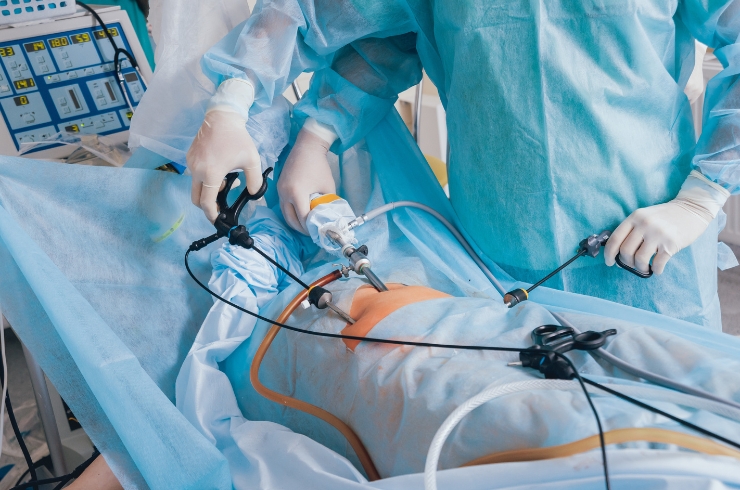General Surgery

Hernia Repair Surgery
A hernia occurs when an internal organ pushes through a weakened area in the muscle or tissue, most commonly in the abdomen or groin. Symptoms may include visible bulge, pain, and discomfort during lifting or straining. Hernia repair surgery is a definitive treatment, often performed using laparoscopic (keyhole) techniques that offer smaller incisions, less pain, and quicker recovery. The procedure involves repositioning the protruding tissue and reinforcing the weak spot with a mesh. Early intervention helps avoid complications like strangulation or bowel obstruction. With advanced surgical options and precision techniques, hernia repair today is safe, effective, and tailored to ensure fast return to normal life.
Gallbladder (Stone) Removal – Laparoscopic Cholecystectomy
Gallstones are solid particles that form in the gallbladder, often causing abdominal pain, nausea, vomiting, and indigestion. When symptoms are frequent or complications arise, laparoscopic cholecystectomy (gallbladder removal) is the preferred treatment. This minimally invasive surgery involves removing the gallbladder through tiny incisions using a camera and special instruments. It offers less pain, quicker recovery, and minimal scarring compared to open surgery. The procedure prevents recurrent attacks, infections, and long-term digestive issues. Patients typically resume normal activities within a few days. Timely removal of the gallbladder ensures a healthier digestive system and protects against more serious biliary complications.


Appendicitis Surgery
Appendicitis is the inflammation of the appendix, a small organ in the lower right abdomen. It presents with sudden abdominal pain, fever, nausea, and loss of appetite. If untreated, it can lead to rupture and serious infections. The standard treatment is appendectomy—surgical removal of the appendix, usually performed laparoscopically for minimal recovery time and discomfort. This procedure is quick, effective, and safe when performed early. Post-surgical recovery is smooth, with most patients discharged within a day. Early diagnosis and surgery prevent life-threatening complications and ensure a complete return to normal activities with minimal downtime.
Hydrocele & Varicocele Surgery
A hydrocele is a fluid-filled swelling in the scrotum, while a varicocele is the enlargement of veins in the scrotum, often linked to infertility. Both conditions can cause pain, swelling, and discomfort during movement or intimacy. Surgery is recommended when symptoms persist or fertility is affected. Hydrocelectomy and varicocelectomy are minor, outpatient procedures that restore normal anatomy and function. Laparoscopic and microsurgical techniques ensure quick healing, minimal scarring, and excellent outcomes. Timely intervention not only relieves physical discomfort but also supports reproductive health. These surgeries are safe, efficient, and essential for long-term well-being in men of all ages.


Breast Lump & Thyroid Nodule Removal
Breast lumps and thyroid nodules are common findings during routine check-ups or imaging tests. While many are benign, proper evaluation is essential to rule out malignancy. Diagnostic tools include ultrasound, FNAC (needle biopsy), and blood tests. If needed, surgical excision is done to remove the lump or nodule safely. Breast lump removal (lumpectomy) and thyroid surgery (lobectomy or total thyroidectomy) are performed with utmost care to preserve function and appearance. Early detection and treatment are crucial for the best outcomes. Post-operative care includes regular monitoring and follow-up imaging. These surgeries provide clarity, confidence, and peace of mind for patients.
